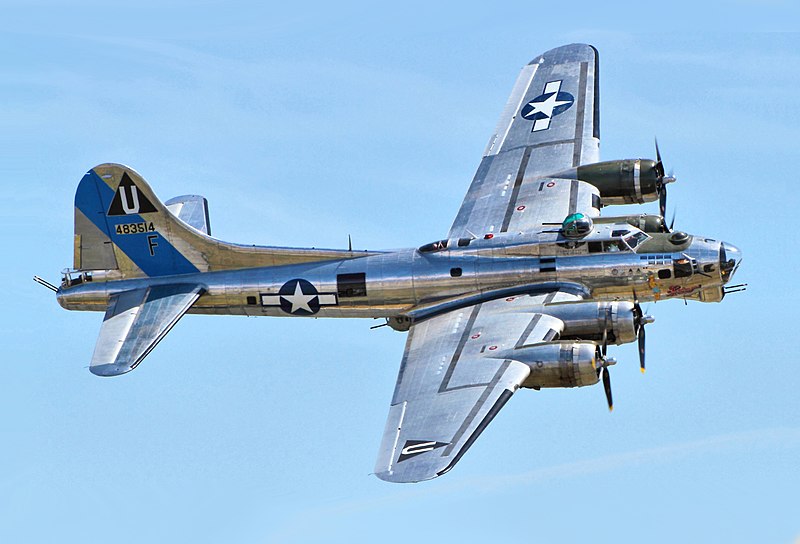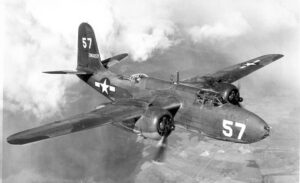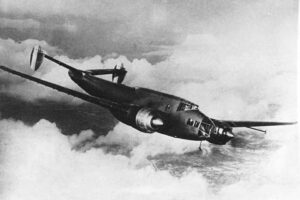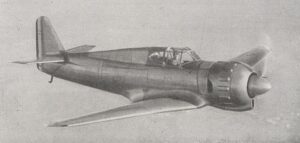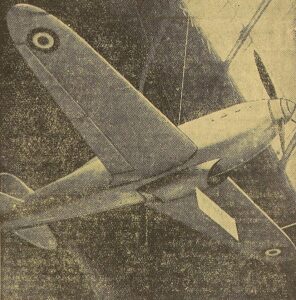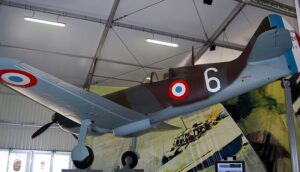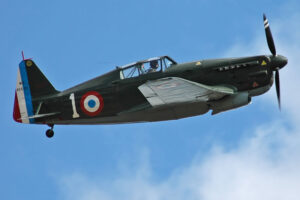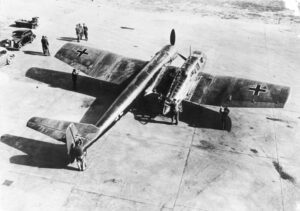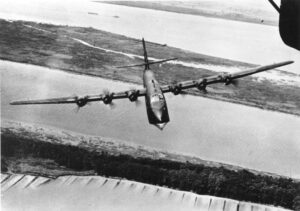Time Period: World War II
Country of Origin: United States
Type: Bomber Aircraft
Manufacturer: Boeing
Boeing B-17 Flying Fortress Aircraft Overview
The B-17 Flying Fortress is a four-engine heavy bomber aircraft developed by Boeing during the 1930s. It was used extensively by the United States Army Air Forces (USAAF) in World War II for strategic bombing campaigns against German industrial and military targets.
The B-17 was known for its durability and ability to withstand heavy damage from enemy fire. It was heavily armed with machine guns and could carry up to 8,000 pounds of bombs. The aircraft was also equipped with advanced technology for the time, including a sophisticated bombsight and a remote-controlled gun turret system.
The B-17 was produced in several variants, with the most famous being the B-17G, which featured improved armor and increased firepower. A total of 12,731 B-17s were produced during the war, with some continuing to serve in various roles well into the post-war years.
The B-17 also became famous for its role in the daylight bombing campaign over Germany, and for the bravery and sacrifice of its crews. Today, a few B-17s remain in flying condition and are used for public demonstrations and airshows.
The Role of the Flying Fortress B-17 During WW2
The Boeing B-17 Flying Fortress played a crucial role during World War II as a strategic bomber employed by the Allied air forces, primarily the United States Army Air Forces (USAAF). Renowned for its ruggedness, firepower, and long-range capabilities, the B-17 became an iconic symbol of American air power and played a significant part in the air war over Europe.
The B-17 was tasked with conducting daylight precision bombing raids deep into enemy territory, targeting key industrial and military installations in Nazi-occupied Europe. Its formidable defensive armament, consisting of multiple machine guns strategically positioned around the aircraft, earned it the moniker “Flying Fortress” and provided vital protection against enemy fighters.
Throughout the war, B-17s flew thousands of sorties over enemy territory, participating in major campaigns such as Operation Pointblank and the strategic bombing of Germany. Despite facing heavy opposition from German fighters and anti-aircraft defenses, B-17 crews pressed on, delivering their payloads with precision and determination.
Boeing B-17G Specifications
- Crew: 10: Pilot, co-pilot, navigator, bombardier/nose gunner, flight engineer/top turret gunner, radio operator, waist gunners (2), ball turret gunner, tail gunner.
- Length: 74 ft 4 in (22.66 m)
- Wingspan: 103 ft 9 in (31.62 m)
- Height: 19 ft 1 in (5.82 m)
- Wing area: 1,420 sq ft (131.92 m2)
- Airfoil: NACA 0018 / NACA 0010
- Empty weight: 36,135 lb (16,391 kg)
- Gross weight: 54,000 lb (24,500 kg)
- Max takeoff weight: 65,500 lb (29,700 kg)
- Aspect ratio: 7.57
- Powerplant: 4 × Wright R-1820-97 “Cyclone” turbo supercharged radial engines, 1,200 hp (895 kW) each.
- Propellers: 3-bladed Hamilton-Standard constant-speed propeller.
Boeing B-17G Performance
- Maximum speed: 287 mph (462 km/h, 249 kn)
- Cruise speed: 182 mph (293 km/h, 158 kn)
- Range: 2,000 mi (3,219 km, 1,738 nmi) with 6,000 lb (2,700 kg) bombload
- Ferry range: 3,750 mi (6,040 km, 3,260 nmi)
- Service ceiling: 35,600 ft (10,850 m)
- Rate of climb: 900 ft/min (4.6 m/s)
- Wing loading: 38.0 lb/sq ft (185.7 kg/m2)
- Power/mass: 0.089 hp/lb (150 W/kg)
Boeing B-17G Armament
- Guns: 13 × .50 in (12.7 mm) M2 Browning machine guns in 9 positions (2 in the Bendix chin turret, 2 on nose cheeks, 2 staggered waist guns, 2 in upper Sperry turret, 2 in Sperry ball turret in belly, 2 in the tail and one firing upwards from radio compartment behind bomb bay)
- Bombs:
- Short range missions; Internal load only (<400 mi): 8,000 lb (3,600 kg)
- Long range missions; Internal load only (≈800 mi): 4,500 lb (2,000 kg)
- Max Internal and External load: 17,600 lb (7,800 kg)
Boeing B-17 Flying Fortress Image Gallery
More Boeing Aircraft
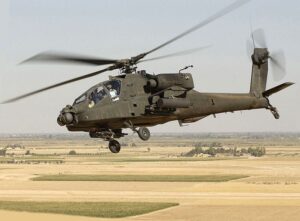
Boeing AH-64 Apache
The Boeing AH-64 Apache is an American twin-turboshaft attack helicopter primarily operated by the U.S. Army but used by many nations.

Boeing-Stearman Model 75
The Boeing-Stearman Model 75 was an American biplane formerly used as a military trainer aircraft by the U.S. Air Forces and U.S. Navy.

Boeing B-29 Superfortress
The Boeing B-29 Superfortress is an American four-engined propeller-driven heavy bomber flown by the United States during World War II.

General Dynamics-Boeing AFTI/F-111 Aardvark
The General Dynamics-Boeing AFTI/F-111 Aardvark was a research aircraft used to test a supercritical mission adaptive wing (MAW) built by Boeing.

Boeing P-26 Peashooter
The Boeing P-26 Peashooter was the first all-metal American fighter aircraft and the first pursuit monoplane to join the Army Air Cops.

